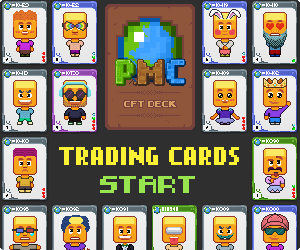Published Oct 23rd, 2013, 10/23/13 5:16 pm
- 42,193 views, 8 today
- 24
- 12
- 6
36
Project Guide | Medieval City
What it takes to build a successful medieval city*
Have you ever wanted to build a large medieval city, or settlement, but didn't know where to start? Well, here I will discuss what your city should consist of with additional tips and suggestions. So, lets dive in shall we?
What should I build in the city?
Since there are many different structures and buildings that could possibly be apart of a medieval city or town, I will just provide a list of them for you. Here is a long list of things that I have come up with whilst brainstorming:
Governmental Buildings:
Town Hall/government building
Prison
Bank
Keep/Castle
Church/Cathedral
City Regulated Areas/Buildings
Market Square
Sewer (maybe with addition to underground catacombs)
Execution (guillotine, hanging, etc.)
Barracks
Library or monastery
Harbor
Stables
Anything else owned by the city (not privately owned)
Craftsmanship Buildings
Brewery + vineyard
Tailor(s)
Slaughterhouse
Potion/alchemy shop(s)
Carpentry
Blacksmith(s)
Fletcher's shop
Apothecary
Weaponry/Armor shop(s)
Weaver
Shoemaker
Saddler
Locksmith
Bucklemaker
Jeweler
Masons
Painters
Barber
Candlemakers
Entertainment/luxury Buildings
Taverns
Bakeries and restaurants
Arena
Flowershop
Market Squares (placed here as well because entertainers would perform there)
Theatre
Festivals:
Wrestling
Horseshoes
Archery contest (very popular)
Hammer-throwing
Gameball (simple football game)
Jousts and tournaments
Other Important Things
Mills:
Saw mill + lumber yard
Water mill
Wind mill
Guilds:
Hunters
Thieves
Merchants
Craftsman
Spellcasters (if you're the fantasy type)
Farming
Inns
Housing (about 60% of the city)
Additional Details
*If your city is near a large water source, remember to build a well established port including: ships, merchant shops, charter masters, shipyards, and cranes. It is also a good idea to make a fishing area near streams and rivers and not necessarily at a port.
*If it is realistic to build mines for your city, then certainly do so! If your city has access to mining, then you might consider building more craftsmanship shops such as jewelers and cobblers.
What should be built outside of the city walls?
Outside of the city walls, the majority of the land around the city would be farmland. This is very important because the produce reaped from surrounding farms is what fed the citizens living inside the city. You might also find homesteads outside the city walls, but very few. By this time, the growth (urbanization) of the city would attract anyone living off the land around it.
Additional Tips and Suggestions
- Decoration. It is always nice to add decoration to your city such as: cluttered streets, street-lamps, wagons, and merchant carts. Don't forget to add some custom trees, which can do wonders for the characterization of a city.
- Fortification. Remember, if you're building a large city then it would make sense to have city walls, although they are not needed. However, if your city is militaristic then you might consider adding catapults or trebuchets to your walls along with fortifications.
- Variation. Inside your city, remember to add variations to your terrain and buildings. Utilize small walls/borders and try and build with the landscape, not against it. Do your best to refrain from building across one level and instead, build across multiple levels of varying heights.
- Realistic Proportions. Keep in mind that about 60% of your city's structures should be residential. The other 40% consists of the things that were mentioned on the list. A realistically proportioned city would not have seventy blacksmiths.
- Activity. Adding life to your city is a good idea. You can achieve this by introducing animals to your city; chickens strutting on the streets, horses snorting at hitching-posts. It is up to your personal preference on the topic of adding testificates into your city. You might also liven up your city by adding vegetation (vines, flower pots, and leaves)
- Wear and Tear. When it comes to adding detail to your city, this might be the most noticeable one. Try and build your city as if it has existed more than just a few days work, and instead it has endured many seasons of death and regrowth. You may achieve this by placing leaves and vines in realistic locations, cracks in the roads, small ruins here and there, cracked/mossy stone blocks, abandoned houses, etc. Maybe even consider adding ruins somewhere. This will surely add that much more to your already stunning city.
- Construction. Yes, build structures-in-the-making along with cranes. This will promote business and growth to the overall effect of your city. A great way to express this is with shipyards. I just love the scene of a large ship under construction.
- Randomization. Try and use different blocks to enhance the look of your builds.
- Lore. Though lore is not necessary, it can always add to the depth of your city and give others more to look at. An example of this could be as slight as naming a tavern something interesting rather than just labeling it "tavern."
*I hope this helped you develop a better understanding of building medieval cities and I hope you are able to use this guide for your future projects. Good luck to you and your city!
*If you have any questions or comments, feel free to post them below. Also, if you think this post deserves a diamond and a favorite, certainly do so! Thanks!
~Drummer180
| Tags |
2534362
6











Create an account or sign in to comment.